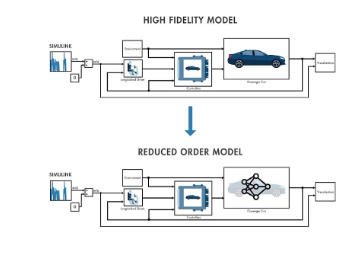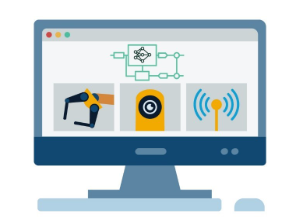Top AI trends for engineers in 2024
As the adoption of AI grows across countless industries, it continues to enable impactful progress and revolutionise various aspects of technology and human interaction.
This article originally appeared in the Jan'24 magazine issue of Electronic Specifier Design – see ES's Magazine Archives for more featured publications.
Forrester predicts that Enterprise AI initiatives will boost productivity and creative problem-solving by 50% in 2024. AI will impact the work of engineers and educators alike, saving time to free them up to tackle other projects that advance scientific and engineering causes.
Here are three major trends that will drive AI’s continued momentum in 2024:
AI prediction #1: AI and simulation become essential in the design and development of engineered systems
As AI pushes toward the mainstream in all industries and applications, complex engineered systems that don’tcontain AI will become outliers. Engineered systems combine components and subsystems from multiple domains to create intelligent systems that perceive and respond to the world around them. An example is a wind turbine, which combines mechanical (turbine blades and gearbox), electrical (generator), and control (blade pitch) components. The rise in the success of complex AI systems is mainly due to the rise of simulation being incorporated into the design and development of those systems.
Simulation is a proven way to perform multi-domain modeling and simulation necessary to develop complex systems. AI can process data from sensors to assist in developing perception systems and autonomous systems. However, as system complexity increases, some simulations can become too computationally intensive for system-level and embedded design, especially in testing that requires a model to run in real-time. In this scenario, AI can also enhance simulations by using Reduced-Order models.
Reduced Order Models (ROMs) can speed up simulations while still providing acceptable accuracy for system-level testing of control algorithms. ROM models can complement first-principles models, creating variant implementations that enable a tradeoff analysis between accuracy, performance, and complexity.
Increasingly, more engineers are exploring incorporating AI-based ROM models into their systems. This can help accelerate desktop simulation affected by a third-party high-fidelity model, enable Hardware-in-the-Loop testing by reducing the complexity of the models, or speed up Finite Element Analysis (FEA) simulations.
AI prediction #2: Smaller models are preferred for embedded AI; large models will persist for computer vision and language models
AI models can have millions of parameters that require a large amount of memory to run. In research, accuracy is top of mind, but when deploying AI models to hardware, the tradeoffs between memory and accuracy will collide. AI practitioners must consider how their model’s performance will differ when deploying to devices where speed and memory are crucial. AI can be added as a smaller component in existing control systems rather than relying on end-to-end AI models, such as those typically used in computer vision to detect objects.
An especially relevant topic when discussing smaller AI models is Incremental Learning. Incremental Learning is a machine learning approach that enables the model to learn continuously by updating its own knowledge in real-time as new data becomes available; it is considered an efficient method for edge deployment.
AI prediction #3: GenAI helps engineering professors teach more advanced topics
Generative AI is a disruptive technology engineering professors will use in their classrooms to help students on a large scale in 2024 and beyond. Much like the internet or mobile phones, GenAI is launching a revolution that will enhance the entire engineering education landscape.
The main advantage of using GenAI in the classroom is its time-saving capabilities when teaching engineering students foundational skills, such as computer programming. By freeing up the time professors previously used to present low-level concepts, they can now focus on teaching high-level topics such as complex engineering system design and implementation. Professors can save time and better engage students by using technologies like ChatGPT to run simulations and create interactive exercises and labs.
Professors can teach students the skills necessary to effectively use GenAI, such as prompt engineering. This will help students develop critical thinking skills that they can employ rather than relying exclusively on machines for solutions. As a result, students will be encouraged to practice independent learning in various engineering disciplines while engineering educators can expand their curriculum further than before as they share their expertise in more advanced concepts.
Conclusion
As AI matures, its role in enhancing productivity and potential for engineers and educators is becoming more pronounced. When building complex engineered systems, engineers would be wise to employ AI-assisted simulation and smaller AI models. In academia, generative AI saves effort for educators and enables students to be more independent. AI enables more informed decisions, actionable insights, and improved efficiency across a multitude of industries and educational institutions.











